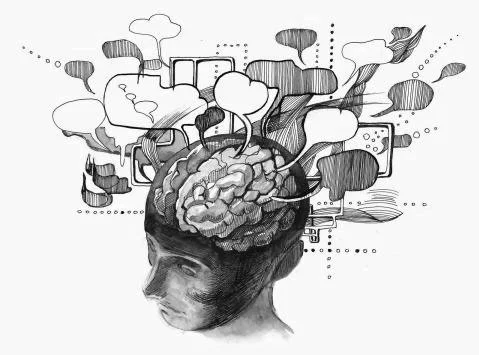Somatic Psychotherapy
Somatic therapy is experiencing a surge in popularity as an effective method to enhance both physical and mental well-being. This holistic approach places emphasis on the complete individual, employing techniques such as movement, touch, and awareness to address underlying physical and emotional concerns. In this article, we will delve into the fundamentals of somatic therapy, exploring its mechanics and the numerous advantages it offers. Whether you aspire to enhance your overall health or seek profound healing, engaging in somatic therapy under proper guidance and attentive care can yield remarkable results.
Understanding Somatic Therapy
Somatic therapy is a crucial mental health and well-being approach that recognizes the profound connection between the mind and body. This therapy focuses on the nervous system, including the sensations, emotions, and movements associated with various experiences and feelings. Its primary objective is to empower individuals to cultivate greater self-awareness, heal from emotional and physical pain, and build resilience to confront all challenges.
The fundamental principle behind somatic therapy is that our bodies store memories, emotions, and behaviour patterns, which can manifest as physical sensations such as tension, pain, or discomfort. By being mindful of these signals, individuals can explore and process their experiences in a safe and supportive environment.
Somatic therapy is an effective tool for addressing an array of mental health concerns, including anxiety, depression, trauma, and chronic pain. It can also help individuals deepen their understanding of themselves and improve their overall well-being. The core of somatic therapy lies in the fact that the mind and body are closely intertwined, and by working with both, individuals can achieve profound healing and transformation.
By becoming more conscious of our physical sensations and how they relate to our emotions and thoughts, we can attain greater control over our experiences and cultivate greater resilience and well-being to confront life's challenges.
How Somatic Therapy Works
Somatic therapy is a combination of talk therapy, physical exercises, breathwork, meditation, and other techniques aimed at helping clients connect with and work through their bodily sensations and emotions. These exercises can involve movement, touch, and visualization techniques that work to release held tension and stress from the body.
Emotional pain can manifest itself physically in the body, resulting in symptoms such as headaches, muscle tension, stomach aches, fatigue, and more. Somatic therapy acknowledges this and aims to address the physical manifestation of emotional pain, helping clients attain a more balanced and integrated sense of well-being.
Moreover, somatic therapy recognizes the mind-body connection, where changes in the physical body can lead to changes in mental health and vice versa. By tapping into the physical body and its sensations, somatic therapy can help clients comprehend and process their emotions and thoughts more efficiently.
The Benefits of Somatic Therapy
Somatic therapy has many potential benefits for individuals seeking a deeper understanding of their mental and emotional state and those who may be experiencing physical symptoms related to unresolved trauma or stress. Some of the key benefits of somatic therapy include:
1. Holistic Approach: Somatic therapy takes a holistic approach to healing that addresses the interconnectivity between mind, body, and spirit. This comprehensive approach allows individuals to identify and address the underlying causes of their emotional or physical symptoms rather than just treating the symptoms themselves.
2. Improves Physical Symptoms: Somatic therapy can help individuals alleviate physical symptoms related to trauma or stress, such as chronic pain, muscle tension, or digestive issues.
3. Increased Awareness: Through somatic therapy, individuals can increase their awareness of how their bodies and emotions are connected, leading to a greater understanding of themselves and their behaviours.
4. Promotes Emotional Regulation: Somatic therapy helps individuals develop skills to manage difficult emotions and regulate their responses to stressors, resulting in improved emotional stability and resilience.
5. Supports Personal Growth: Somatic therapy encourages individuals to develop a deeper connection with their bodies, leading to greater self-awareness, personal growth, and the ability to make positive life changes.
Contact Integrative Psychotherapy Toronto Today
If you're interested in exploring the benefits of somatic therapy, we invite you to contact Integrative Psychotherapy Toronto today. Our experienced therapists are trained in a range of somatic therapy techniques and can work with you to develop a personalized treatment plan based on your unique needs and goals. We believe in a collaborative approach to therapy, and our goal is to help you feel empowered and supported as you work through your challenges and develop greater resilience and emotional well-being.
To get started, visit our website or give us a call to schedule a consultation. We look forward to hearing from you and supporting your healing journey.
Frequently Asked Questions About Somatic Therapy
Q.1: What is the goal of somatic therapy?
Somatic therapy aims to help individuals become more aware of their physical sensations, emotions, and thoughts to better understand and regulate their behaviour and improve their overall well-being.
Q.2: Is somatic therapy only for people who have experienced trauma?
No, somatic therapy can be helpful for a range of mental health concerns, not just trauma. It can also be helpful for individuals who are looking to connect more deeply with their bodies and emotions, improve self-awareness, or reduce stress and anxiety.
Q.3: How is somatic therapy different from traditional talk therapy?
Traditional talk therapy primarily focuses on exploring and processing thoughts and emotions through conversation. On the other hand, somatic therapy focuses on the physical sensations in the body and uses techniques to address these sensations to help clients process emotions and experiences.
Q.4: What can I expect during a somatic therapy session?
A somatic therapy session can vary depending on the therapist's approach and the client's needs. However, some common techniques include mindfulness, breathing exercises, movement, touch, and dialogue. The therapist may guide you through exercises to help you become more aware of physical sensations in your body and help you develop ways to respond to those sensations in a healthy way.
Q.5: How do I find a somatic therapist?
You can connect with a somatic therapist, like Integrative Psychotherapy. Online directories can also be a useful resource for finding somatic therapists in your area. Additionally, seeking recommendations from friends, family, or healthcare practitioners is another avenue worth exploring. Choosing a somatic therapist who has received proper training and with whom you feel comfortable working is crucial.







